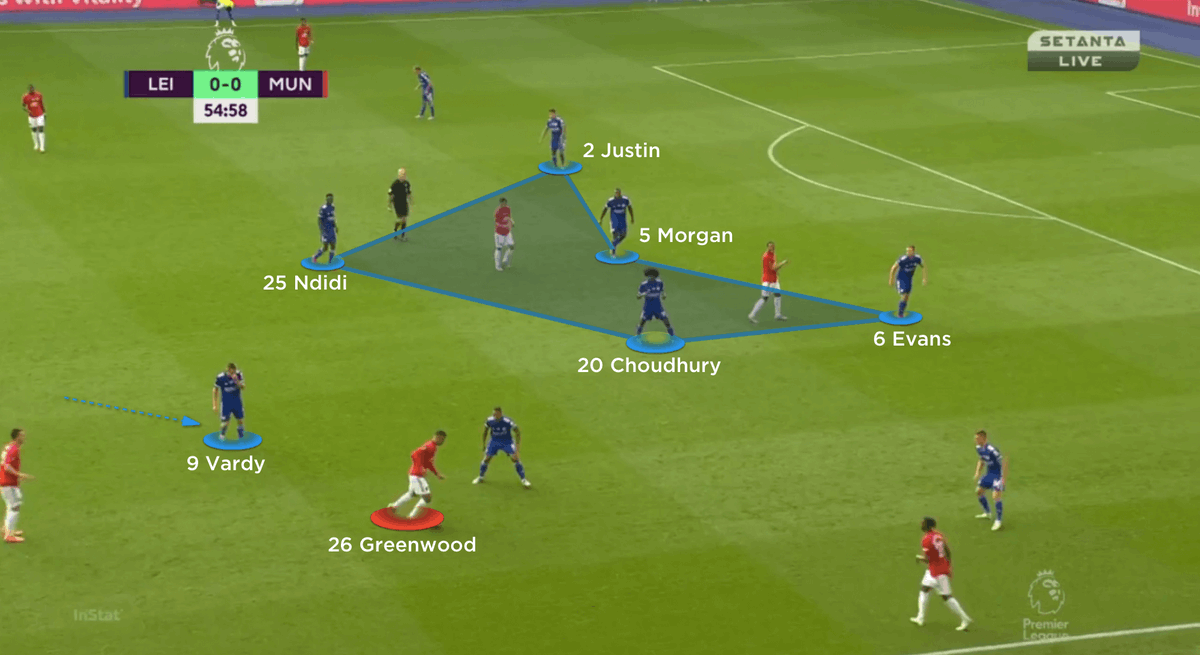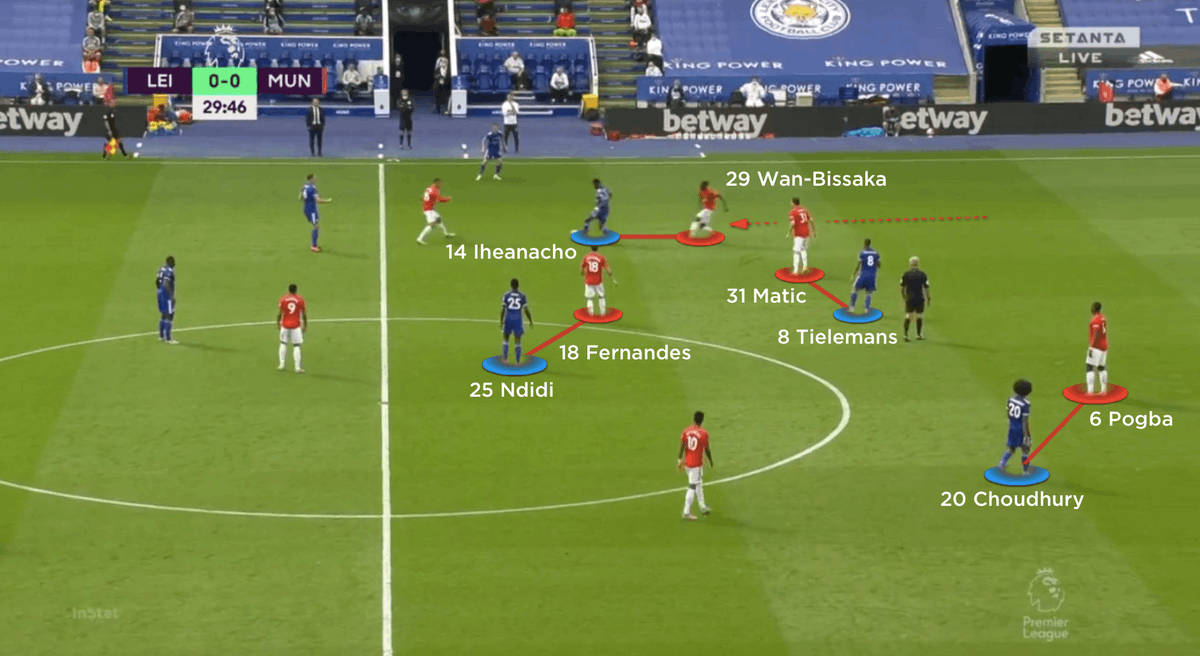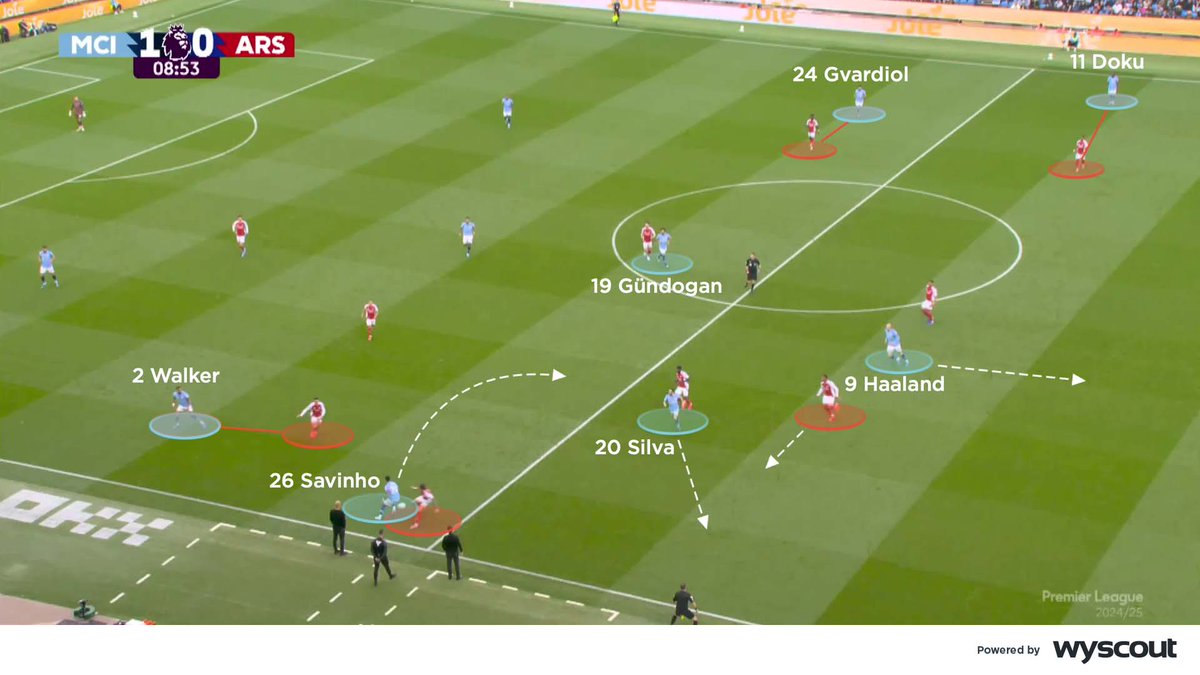Thread! 👇
🔍 A win on Sunday against Leicester secured Champions League football for Manchester United next season. Our coaches highlight the tactical patterns from the game
🔵 #LEIMUN 🔴
🔍 A win on Sunday against Leicester secured Champions League football for Manchester United next season. Our coaches highlight the tactical patterns from the game
🔵 #LEIMUN 🔴
🔍 The advanced partnership between Kelechi Iheanacho and Jamie Vardy forced Manchester United to defend with a narrow back four, and created spaces out wide (1/8)
🔵 #LCFC #LEIMUN
🔵 #LCFC #LEIMUN

🔍 United also often struggled to advance through the 5-3-2 formation hosts Leicester were organised into (2/8)
🔵 #LCFC #LEIMUN
🔵 #LCFC #LEIMUN

🔍 Youri Tielemans adopted a more advanced position during the second half to encourage Iheanacho to play with increased freedom and to attack towards the right (3/8)
🔵 #LCFC #LEIMUN
🔵 #LCFC #LEIMUN

🔍 Leicester’s defence worked to deny the influential Bruno Fernandes space between the lines, and they often succeeded in doing so (4/8)
🔵 #LCFC #LEIMUN
🔵 #LCFC #LEIMUN

🔍 Owing to that and their struggles to advance through central areas of the pitch, United increasingly favoured the left inside channel (5/8)
🔴 #MUFC #LEIMUN
🔴 #MUFC #LEIMUN

🔍 Leicester’s attempts to create numerical overloads in midfield contributed to Aaron Wan-Bissaka and Brandon Williams advancing from full-back (6/8)
🔴 #MUFC #LEIMUN
🔴 #MUFC #LEIMUN

🔍 Wes Morgan’s willingness to advance from central defence created a space that Nemanja Matic and Paul Pogba began to target from the base of United’s midfield (7/8)
🔴 #MUFC #LEIMUN
🔴 #MUFC #LEIMUN

🔍 As the second half progressed, and Leicester’s grasp of possession increased, United adopted a deeper shape that demanded both Marcus Rashford and Mason Greenwood withdrew further back (8/8)
🔴 #MUFC #LEIMUN
🔴 #MUFC #LEIMUN

• • •
Missing some Tweet in this thread? You can try to
force a refresh
















